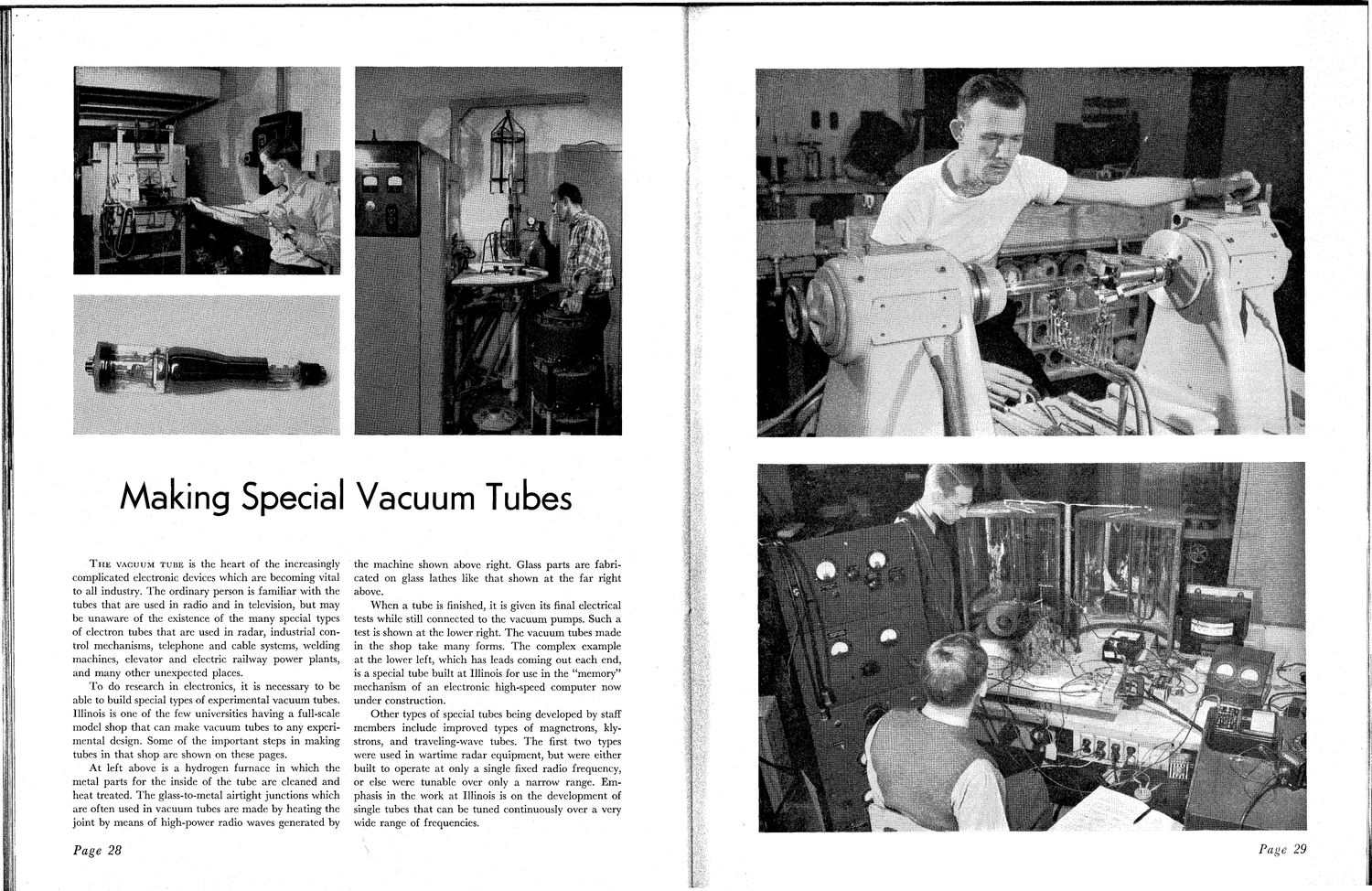| |
| |
Caption: Book - Research on Campus (1949)
This is a reduced-resolution page image for fast online browsing.

EXTRACTED TEXT FROM PAGE:
Making Special Vacuum Tubes T H E VACUUM TUBE is the heart of the increasingly complicated electronic devices which are becoming vital to all industry. T h e ordinary person is familiar with the tubes that are used in radio and in television, but may be unaware of the existence of the many special types of electron tubes that are used in radar, industrial control mechanisms, telephone and cable systems, welding machines, elevator and electric railway power plants, and many other unexpected places. T o do research in electronics, it is necessary to be able to build special types of experimental vacuum tubes. Illinois is one of the few universities having a full-scale model shop that can make vacuum tubes to any experimental design. Some of the important steps in making tubes in that shop are shown on these pages. At left above is a hydrogen furnace in which the metal parts for the inside of the tube are cleaned and heat treated. T h e glass-to-metal airtight junctions which are often used in vacuum tubes are made by heating the joint by means of high-power radio waves generated by the machine shown above right. Glass parts are fabricated on glass lathes like that shown at the far right above. When a tube is finished, it is given its final electrical tests while still connected to the vacuum pumps. Such a test is shown at the lower right. T h e vacuum tubes made in the shop take many forms. T h e complex example at the lower left, which has leads coming out each end, is a special tube built at Illinois for use in the "memory" mechanism of an electronic high-speed computer now under construction. Other types of special tubes being developed by staff members include improved types of magnetrons, klystrons, and traveling-wave tubes. T h e first two types were used in wartime radar equipment, b u t were either built to operate at only a single fixed radio frequency, or else were tunable over only a narrow range. Emphasis in the work at Illinois is on the development of single tubes that can be tuned continuously over a very wide range of frequencies. Page 28
| |